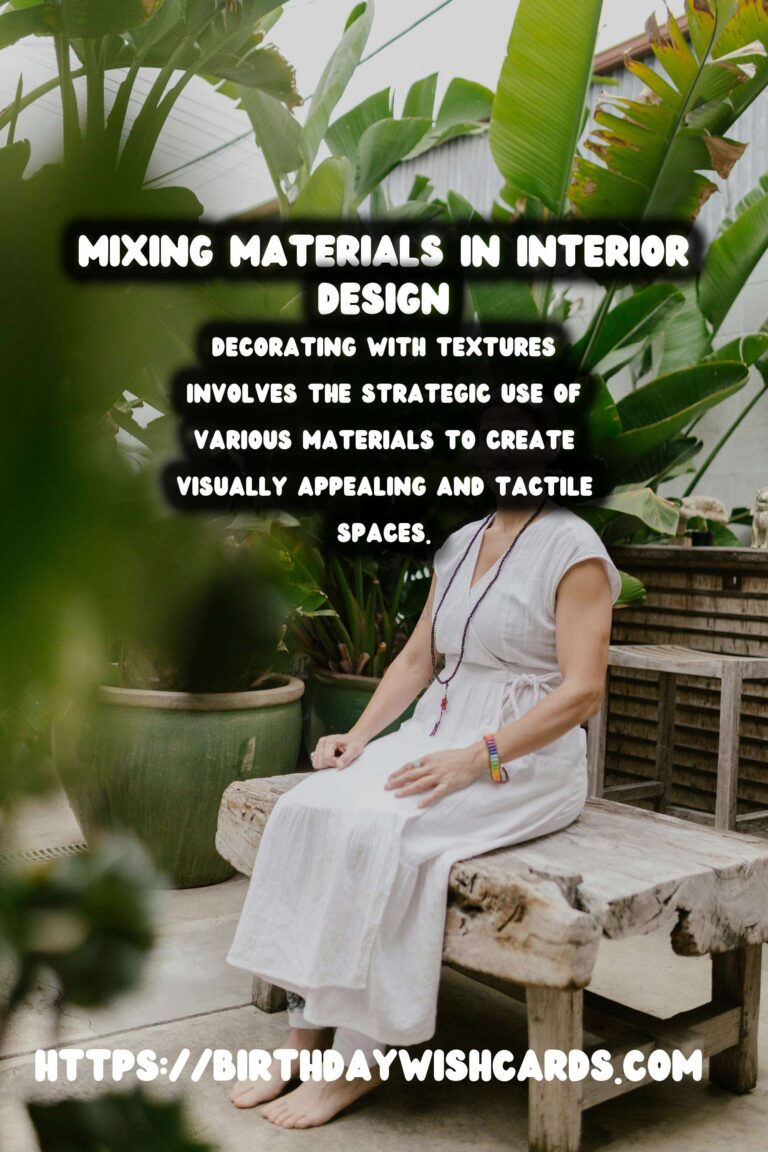
Decorating with textures is a transformative approach to interior design. It involves the strategic use of various materials to create visually appealing and tactile spaces. Textures in home decor can add depth, interest, and character, making a room feel warm and inviting.
Understanding the Importance of Texture in Interior Design
Texture is a crucial element in interior design that can significantly impact the look and feel of a space. It refers to the surface quality of a material—how it looks and feels. By incorporating different textures, you can create contrast and balance, adding layers of interest to your decor.
For instance, a room with smooth, glossy surfaces might feel sleek and modern, while rough, natural textures like wood or stone can evoke a rustic or earthy vibe. The key is to mix and match textures thoughtfully to achieve your desired design aesthetic.
Types of Textures in Interior Design
There are essentially two types of textures: tactile and visual. Tactile texture is the actual feeling of a surface, while visual texture refers to the perceived texture of a surface. Both play vital roles in decorating.
Tactile Textures
Tactile textures include materials that you can physically touch, such as fabrics, wood, metal, stone, and glass. Each material has its own unique feel and can be used to add dimension and interest to a space.
Visual Textures
Visual textures are patterns or colors that give the illusion of texture. Wallpaper, paint finishes, and printed fabrics are examples of visual textures that can add depth without changing the physical surface of the decor.
Mixing Materials for a Harmonious Look
Mixing materials is an art that requires a careful balance of different textures to create a cohesive look. Here are some tips to help you master this art:
Start with a Neutral Base
Begin with a neutral color palette as your base. This allows you to experiment with various textures without overwhelming the space. Neutral colors provide a calming backdrop that can highlight the textures of different materials.
Layer Textures
Layering is essential in texture mixing. Combine different materials such as wood, metal, and fabric to create a rich and inviting atmosphere. For example, you can pair a soft velvet sofa with a wooden coffee table and metal light fixtures for a balanced look.
Use Contrasting Textures
Contrast is key to making textures stand out. Pair smooth surfaces with rough textures to create visual interest. A glossy tile floor can be complemented by a plush rug, or a sleek leather chair can be offset by a chunky knit throw.
Consider Scale and Proportion
When mixing textures, pay attention to scale and proportion. Large, bold textures can dominate a space, so balance them with finer, more subtle textures. This ensures that no single element overpowers the room.
Incorporating Natural Elements
Natural materials like wood, stone, and plants add warmth and authenticity to a space. These materials bring a sense of the outdoors inside, creating a harmonious and tranquil environment.
Wooden furniture, stone accents, and indoor plants can be combined with other textures to create a balanced and inviting space. These elements not only enhance the aesthetic appeal but also contribute to improved air quality and a sense of well-being.
Conclusion
Decorating with textures and mixing materials is a powerful tool in interior design. By understanding the role of texture and learning how to combine different materials, you can create spaces that are not only visually appealing but also comfortable and inviting. Remember to start with a neutral base, layer textures thoughtfully, and incorporate natural elements for a well-rounded design.
Decorating with textures involves the strategic use of various materials to create visually appealing and tactile spaces. Texture in interior design can significantly impact the look and feel of a space. There are essentially two types of textures: tactile and visual. Mixing materials is an art that requires a careful balance of different textures to create a cohesive look. Natural materials like wood, stone, and plants add warmth and authenticity to a space. 
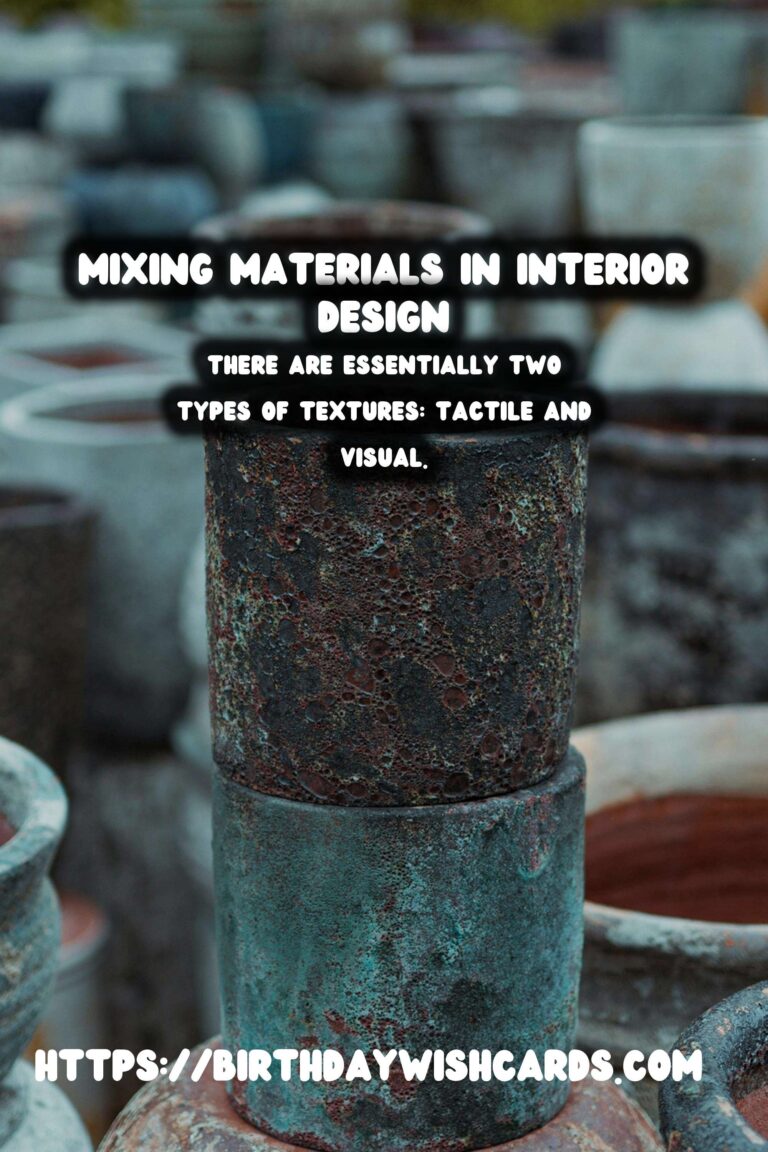
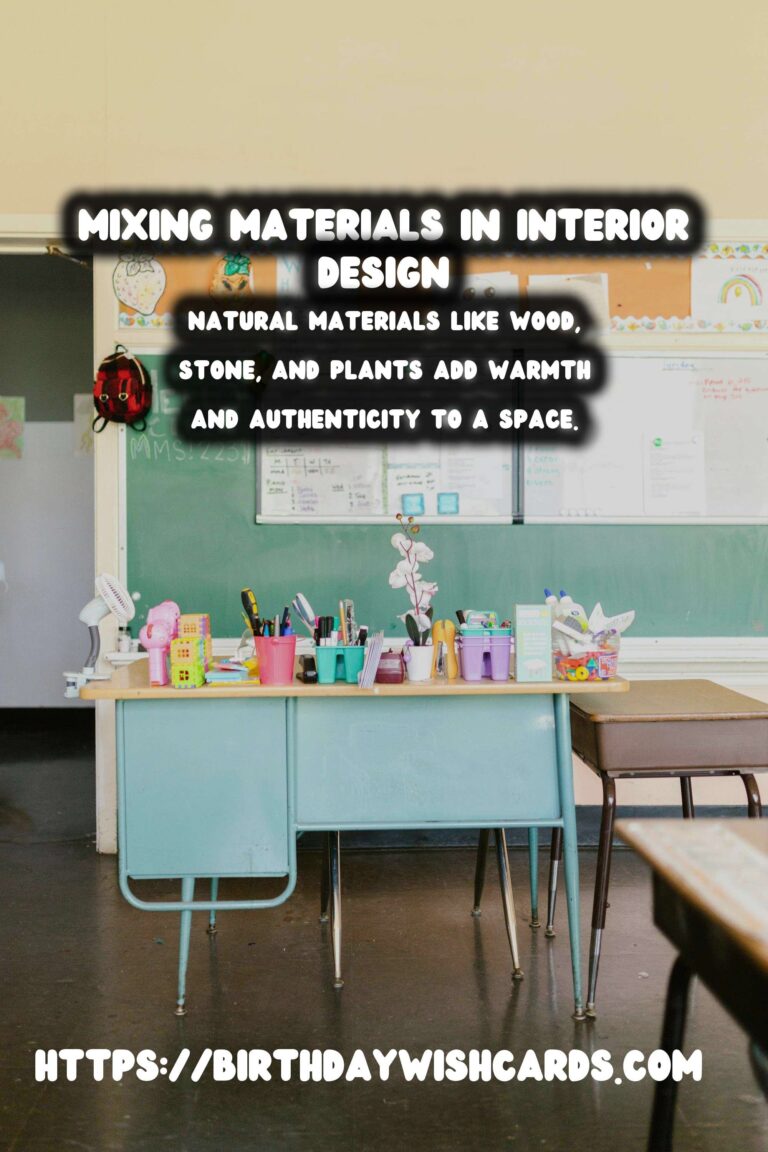
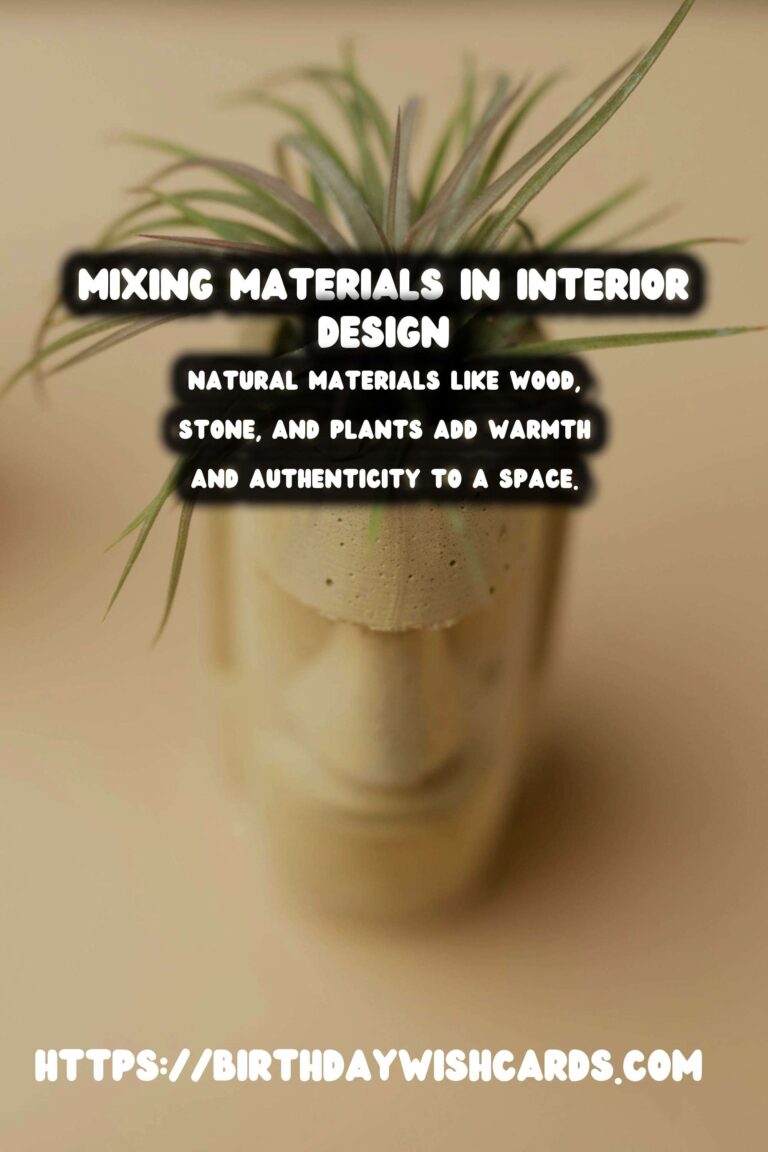
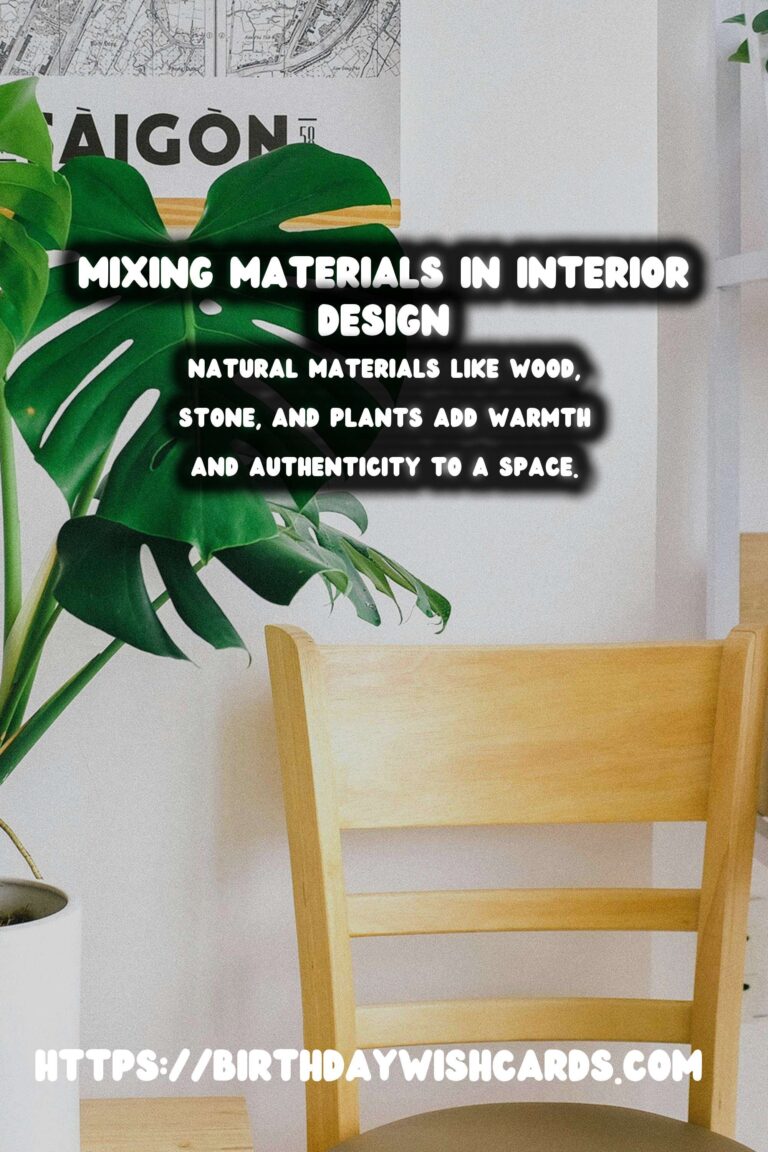
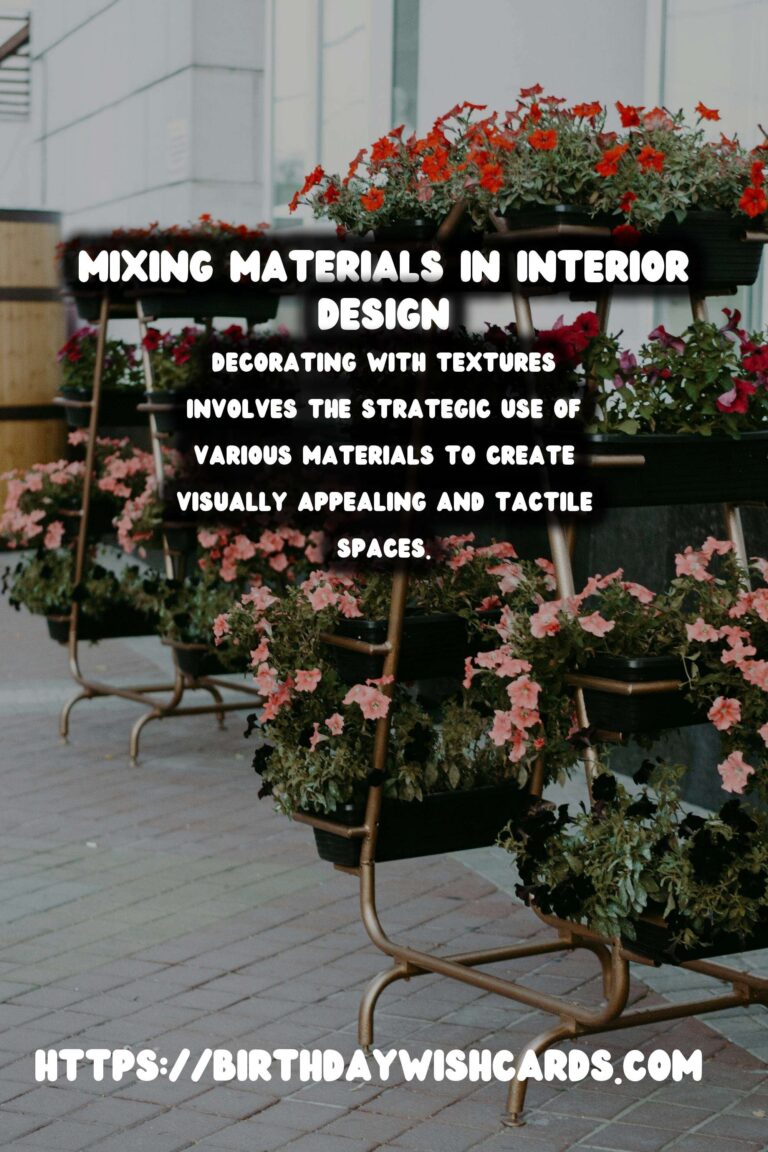
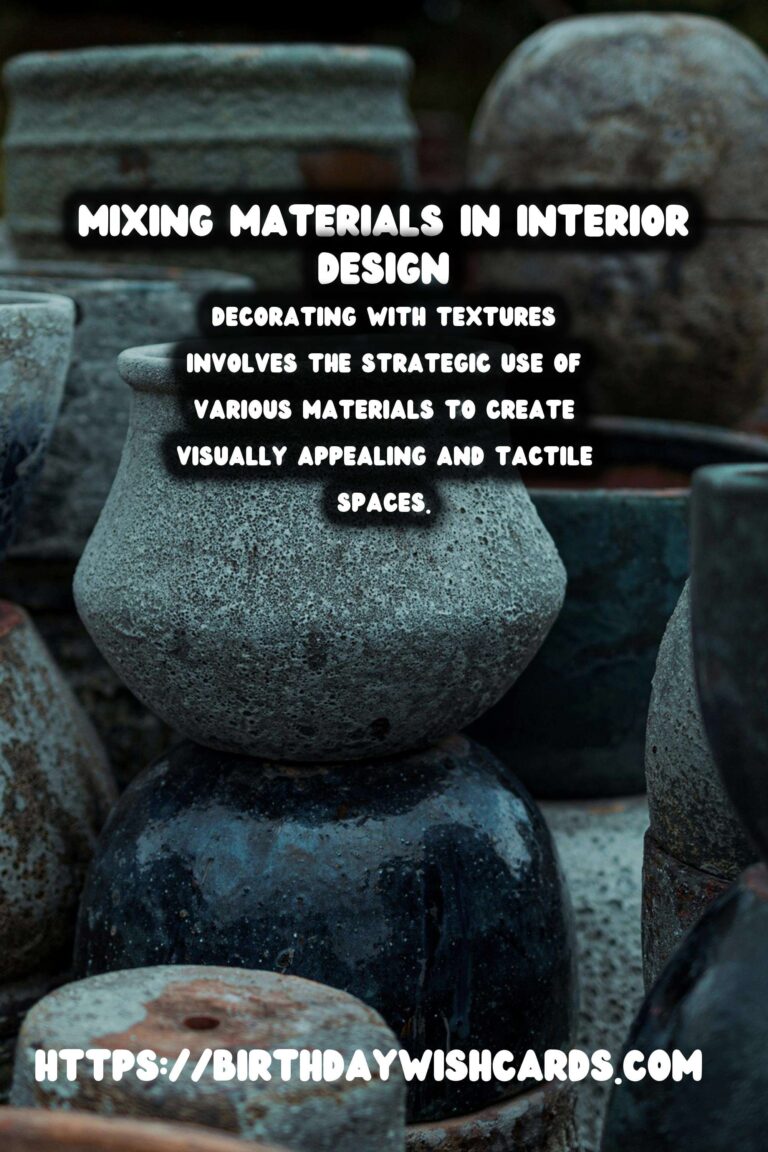
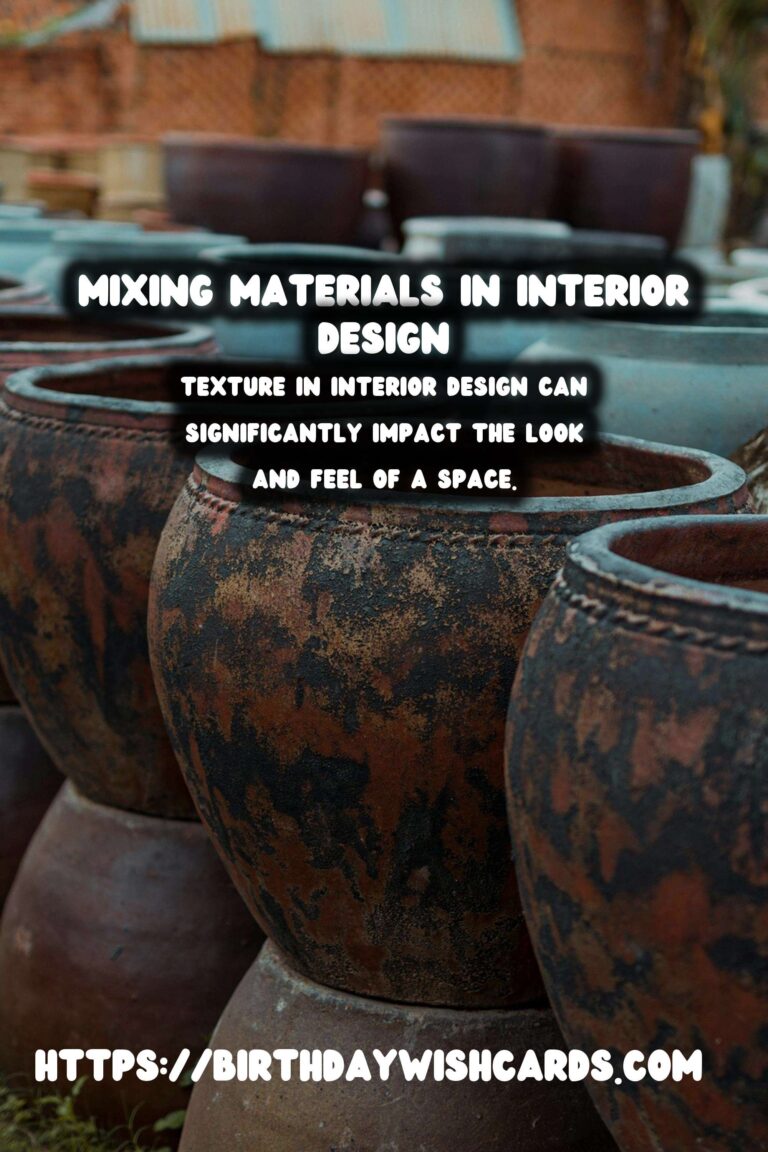
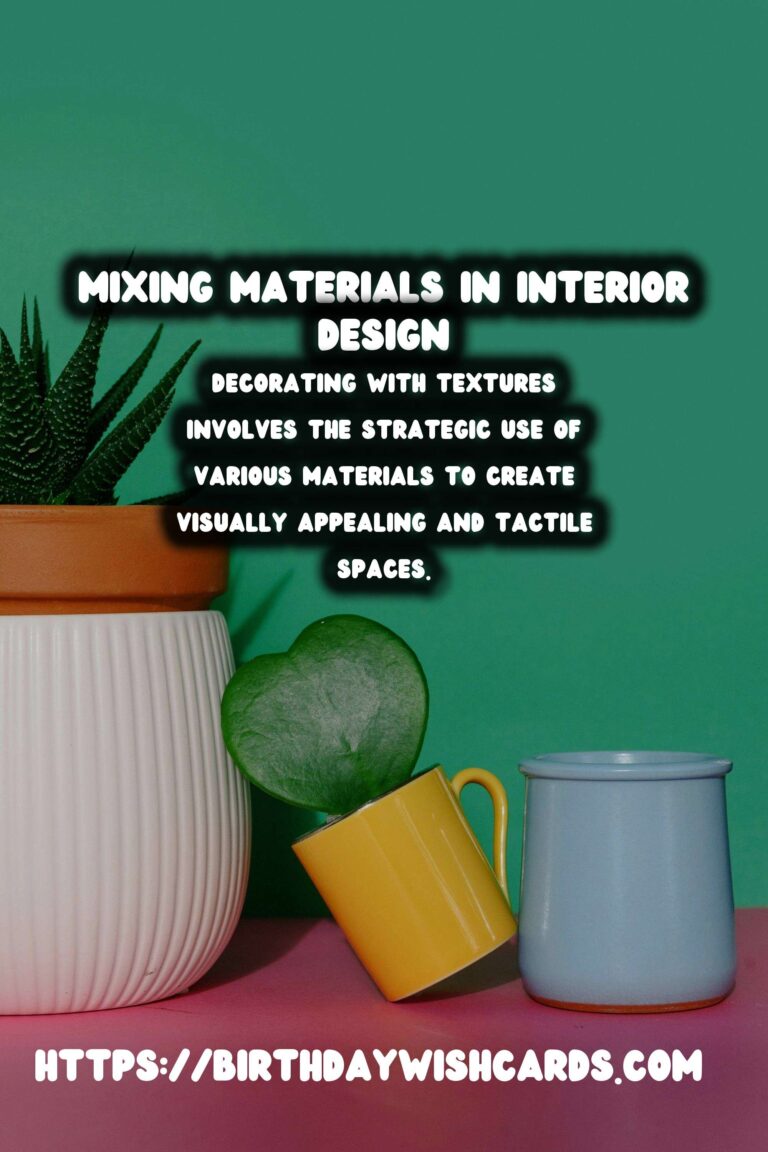

#InteriorDesign #HomeDecor #TextureMixing #DesignTips #HomeStyling




